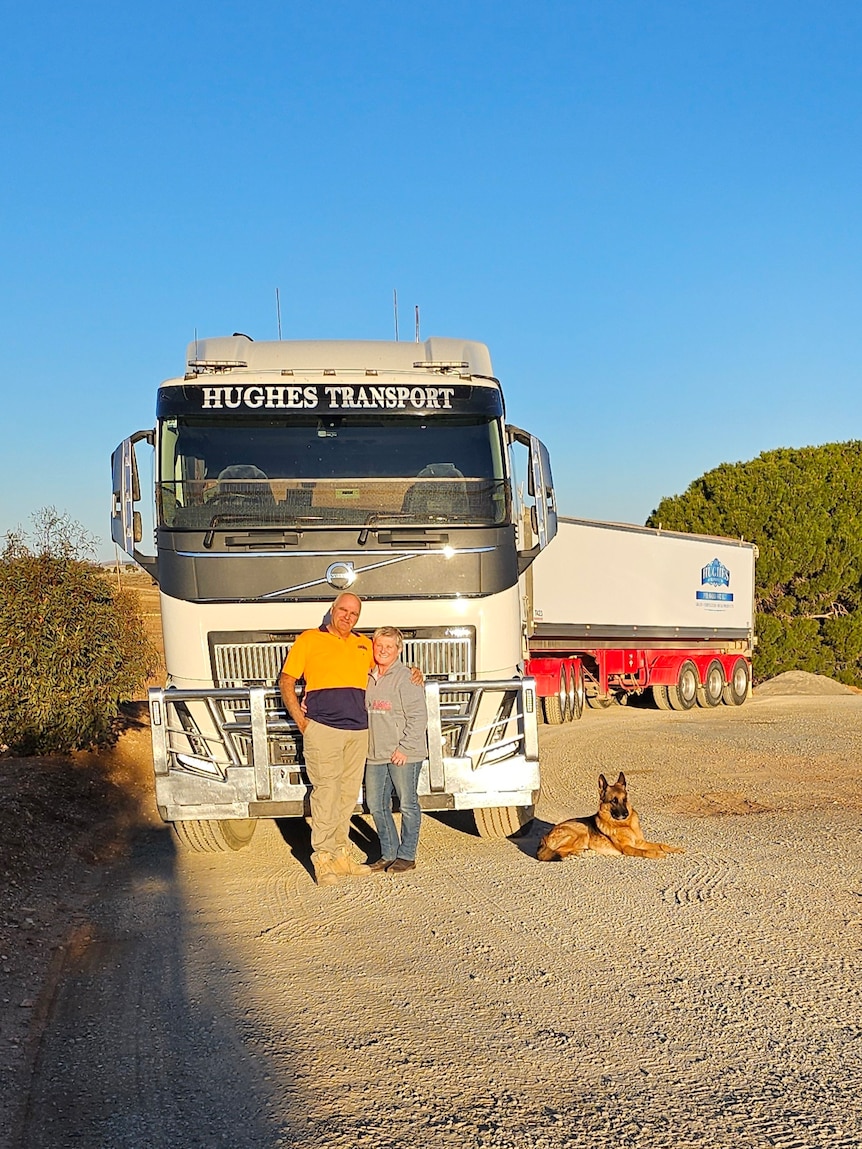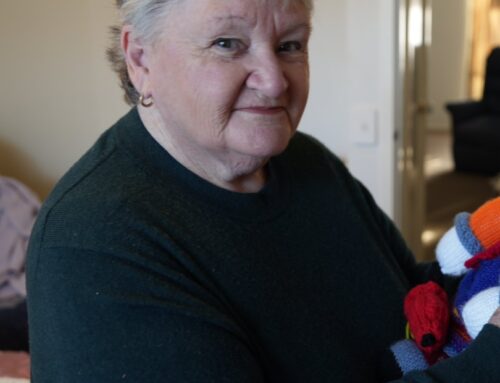Every time Leah Hughes says goodbye to her husband before work, she fears it could be the last time.
Her husband, Robin Hughes, has been a truck driver for 12 years and has travelled around Australia.
“You always stop, pause, really take that time,” said Ms Hughes, from Appila in South Australia’s Mid North.
“At the back of your mind, he might not come home.”
When there’s an accident involving a truck, Ms Hughes tries to get as much information as possible to ensure her husband wasn’t involved.
“My husband’s really good, he contacts me straight away if he hears something.”
Ms Hughes said when footage of a crash was uploaded on social media, families could identify the truck without the driver’s name.
“Trucks have logos, trucks are recognisable,” she said.
“It’s devastating … how would you feel if your relative’s car was noticeable in an accident, and you saw it on social media before you got that knock on the door?
“People get out of their cars filming rather than getting out to help.”
Social media doesn’t help
Mount Gambier local Lisa Catalano, whose husband has been a truck driver for about 35 years, avoids looking at social media when there’s been a crash because truck drivers get a “bad rap”.
“Everyone gets on the bandwagon that it’s the truck driver’s fault,” she said.
“It’s always blaming truck drivers, you know, ‘Another truckie’, ‘He’s on drugs’.
“You just have to stop yourself from reading the comments.”
This is despite a report by the National Road Safety Strategy finding that approximately 80 per cent of fatal multiple-vehicle crashes involving trucks are caused by the other vehicle involved.
The long wait
Ms Catalano says as well as worrying about her husband’s safety, she feels lonely, as every week he leaves for work early Monday morning and returns late Friday night.
“My son has just left home too, he’s moved to Adelaide, so I’m now on my own,” she said.
“The dog is a big saviour … he sleeps on the bed and he’s my company.”
Sydney local Shandi Thompson is also married to a truck driver and experienced similar emotions to Ms Hughes and Ms Catalano, which led her to create the Facebook group Truck Drivers Wives.
“It gets really lonely, especially when you’ve got kids and your partner is on the road,” she said.
“A lot of people don’t understand the life we live.
“I’ve met some really lovely ladies who have shared their stories and experiences.”
The Facebook group has been operating for almost a year and has 60 members from all around the world.
“It’s a safe place for everyone who is in that lifestyle,” Ms Thompson said.
Near misses are common
More than 70 per cent of truck drivers said they had a near miss on average once a week, according to a study by Monash University.
Ms Thompson’s husband was involved in a near miss.
“He was driving back from Canberra in a B-double [truck] and there was a learner that came across from his left side in front of him … they’ve braked and he’s [her husband] braked and then he’s jackknifed,” she said.
“He called me and he was in tears, he’s like, ‘I almost died.’
“He said, ‘I almost didn’t make it home because this learner driver slammed on his brakes.”
State of the industry
According to the Department of Infrastructure, last year in Australia 169 people died in crashes involving heavy trucks.
There have already been some horror accidents this year.
In April, three men died in a two-truck crash on South Australia’s west coast.
South Australian Road Transport Association executive director Steve Shearer said the recent spate of high-profile crashes highlighted a “very longstanding challenge in the industry for truck drivers and their partners, families and employees”.
However, he said the trucking industry’s crash rate had fallen over the past 25 years despite an increase in the amount of freight on the road.
“People are actually more at risk just getting in their car and going to work,” he said.
“But when a truck crash happens it gets a lot of media attention.
“So, the industry is far safer now, but we all continue to work to eradicate crashes.
“The drivers don’t want to be involved in crashes and their employers want them to get home safely, just like their families do.”
Mr Shearer said the biggest safety risk faced by truck drivers was the small percentage of motorists who made dangerous decisions around trucks.
University of NSW emeritus professor Ann Williamson, who is affiliated with the Transport and Road Safety Centre, said the current state of the industry was “a problem” and statistics [in NSW] were “not as good as we’d like”.
In the past five years, the NSW government found there had been 259 fatalities from heavy truck crashes, an average of 52 people killed per year.
“New South Wales is like the thoroughfare … a lot of interstate transport will go through Victoria, New South Wales, Queensland,” Professor Williamson said.
“There’s a lot of exposure to truck movement in New South Wales.”
What needs to change?
Professor Williamson said she would like to see the working conditions and treatment of truck drivers improved.
“Long-distance truck drivers are caught in a vicious cycle of the fact that they are paid by the amount of work they do,” she said.
“Many of them don’t get paid while they’re waiting to load and unload … and they’re not treated very well, the truck is treated better than they are.
“The emphasis on drivers is to do as many hours as possible of driving that they possibly can.”
Professor Williamson said these conditions made family life difficult.
“The hours of service absolutely, definitely need to be reviewed.”





